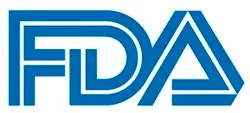sBLA Submitted to FDA for Subcutaneous Daratumumab Plus VRd in Transplant-Eligible Multiple Myeloma
A sBLA seeking the approval of D-VRd for transplant-eligible patients with newly diagnosed multiple myeloma was submitted to the FDA.
FDA

A supplemental biologics license application (sBLA) seeking the approval of daratumumab and hyaluronidase-fihj (Darzalex Faspro) in combination with bortezomib (Velcade), lenalidomide (Revlimid), and dexamethasone (D-VRd) induction and consolidation therapy alongside lenalidomide maintenance for adult patients with newly-diagnosed multiple myeloma who are eligible for autologous stem cell transplant (ASCT) has been submitted to the FDA. 1
According to a press release from Johnson & Johnson, the sBLA is supported by findings from the phase 3 PERSEUS (NCT03710603) trial, which was presented during the 2023 ASH Annual Meeting and simultaneously published in The New England Journal of Medicine.
At a median follow-up of 47.5 months (range, 0-54.4), the estimated 4-year progression-free survival (PFS) rate was 84.3% vs 67.7% among patients who received D-VRd (n = 355) compared with those treated with VRd alone (n = 354), respectively (HR, 0.42; 95% CI, 0.30-0.59; P < .0001). Moreover, the overall response rate was 96.6% (95% CI, 94.2%-98.2%) vs 93.8% (95% CI, 90.7%-96.1%), respectively, complete response or better (≥CR) rate was 87.9% vs 70.1%, respectively, (P < .0001), the stringent complete response (sCR) rate was 69.3% vs 44.6%, respectively, and the complete response (CR) rate was 18.6% vs 25.4%, respectively.2
"We are committed to changing the course of multiple myeloma through building combination regimens such as D-VRd with complementary mechanisms of action. The daratumumab and hyaluronidase–based quadruplet therapy demonstrated a clinically significant reduction in the risk of progression or death for transplant-eligible, newly diagnosed patients with multiple myeloma," Craig Tendler, MD, vice president, Clinical Development, Diagnostics, and Global Medical Affairs, Johnson & Johnson Innovative Medicine, said in a press release. "Patients are most likely to experience their deepest and most durable responses during the first line of treatment with D-VRd. This regimen has the potential to improve long-term outcomes for newly diagnosed patients and we look forward to working with the FDA on the review of this application."1
PERSEUS was an open-label, multicenter study that enrolled patients who were 18 to 70 years old with newly diagnosed multiple myeloma who were eligible for high-dose therapy and ASCT and had an ECOG performance status of 2 or less. Patients were randomly assigned 1:1 to receive subcutaneous daratumumab plus VRd induction therapy before transplantation, followed by VRd consolidation therapy after transplantation, and lenalidomide maintenance therapy or VRd induction and consolidation therapy and lenalidomide maintenance.2
The primary end point was PFS. Secondary end points included ≥CR rate, minimal residual disease (MRD)–negativity rate, and overall survival (OS).
Baseline characteristics were generally well balanced between the 2 arms; the median age was 61 years (range, 32-70) vs 59 years (range, 31-70) in the D-VRd and VRd arms, respectively. Most patients in both arms were male (59.4% vs 57.9%), White (93% vs 91.2%), had an ECOG performance status of 0 (62.3% vs 65%), had IgG measurable disease (57.5% vs 52.3%), had ISS stage I disease (52.4% vs 50.4%), and had standard cytogenetic risk (74.4% vs 75.1%). The median time since diagnosis of multiple myeloma was 1.2 months (range, 0-46.5) vs 1.1 months (range, 0.1-184.6), respectively.
Additional findings from the trial demonstrated the MRD-negativity rate at a sensitivity threshold of 10−5 was 75.2% vs 47.5% in the investigational and control arm, respectively (P < .001); the respective 12-month rates of sustained MRD negativity were 64.8% vs 29.7%. At a threshold of 10−6, the MRD-negativity rates were 61.5% vs 32.2%, respectively. Notably, OS data were immature; death occurred in 34 patients in the D-VRd group compared with 44 in the VRd arm.
In terms of safety, adverse effects (AEs) of any grade occurred in 99.4% of patients in the D-VRd arm (n = 351) compared with 99.1% in the VRd arm (n = 347). The most common any-grade AEs in both arms included infection (86.9% vs 76.7%, respectively), neutropenia (69.2% vs 58.8%), and diarrhea (61% vs 54.2%). Serious AEs (57% vs 49.3%), grade 3 or 4 AEs (91.5% vs 85.6%), AEs leading to treatment discontinuation (8.8% vs 21.3%), and AEs occurring after the start of treatment and leading to death (3.7% vs 4.6%) were reported in both arms.
Daratumumab and hyaluronidase was previously approved by the FDA in May 2020for the treatment of adult patients with newly diagnosed or relapsed/refractory multiple myeloma. The subcutaneous formulation has to date gained approval for 8 indications in multiple myeloma, including 3 for frontline treatment in newly diagnosed patients who are transplant eligible or ineligible.1,3
References
- Johnson & Johnson submits supplemental Biologics License Application to U.S. FDA seeking approval of DARZALEX FASPRO® (daratumumab and hyaluronidase-fihj)-based regimen for the treatment of patients with transplant-eligible, newly diagnosed multiple myeloma. News release. January 30, 2024. Accessed January 31, 2024. https://www.prnewswire.com/news-releases/johnson--johnson-submits-supplemental-biologics-license-application-to-us-fda-seeking-approval-of-darzalex-faspro-daratumumab-and-hyaluronidase-fihj-based-regimen-for-the-treatment-of-patients-with-transplant-eligible-newly-302048440.html
- Sonneveld P, Dimopoulos MA, Boccadoro M, et al. Daratumumab, bortezomib, lenalidomide, and dexamethasone for multiple myeloma. N Engl J Med. 2024;390(4):301-313. doi:10.1056/NEJMoa2312054
- FDA approves daratumumab and hyaluronidase-fihj for multiple myeloma. FDA. May 1, 2020. Accessed January 31, 2024. https://www.fda.gov/drugs/resources-information-approved-drugs/fda-approves-daratumumab-and-hyaluronidase-fihj-multiple-myeloma



